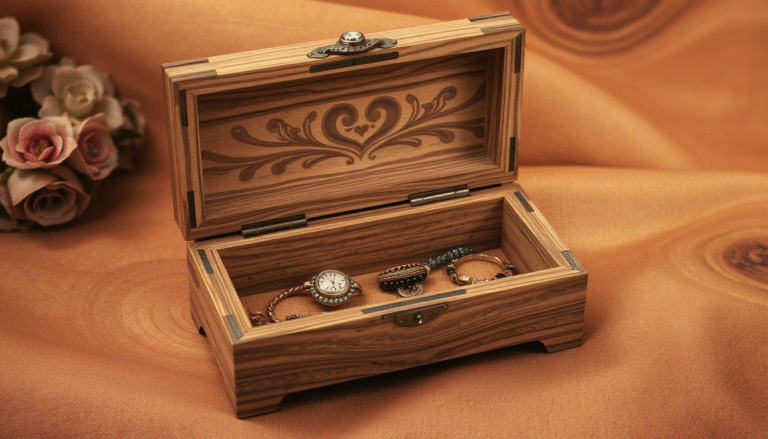Introduction: Finding the Perfect Home for Your Treasures
Your collection of jewelry is much more than just an accessory. There’s a story behind each piece, whether it’s memories, milestones, or one’s personal expression. And such treasures ought to have a life beyond mere storage.
The perfect home — a jewelry box that functions well and looks beautiful — can seem like a journey worth taking for many people. We understand that feeling completely. It’s about setting aside precious space for the things you love.
This guide doesn’t just list options for you to consider. The ideal jewelry box design will have a lot to do with your own personal style, what your collection calls for and how you will use it on a daily basis. We’ll take a look at protecting, organizing, accessing, and aesthetics; all of which point you in the right direction when valuing how well executed design can really be.
The Four Pillars of Great Jewelry Box Design
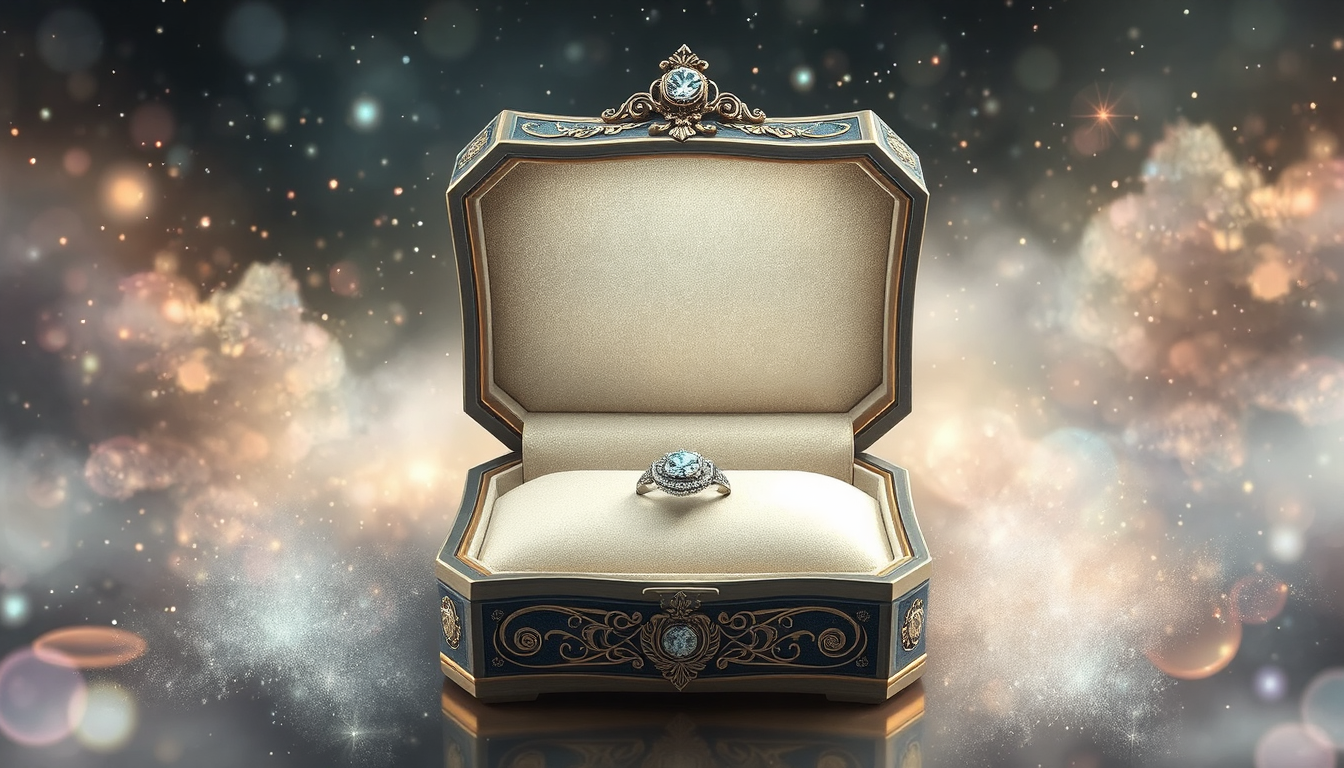
In order to locate the perfect jewelry box, we first need to know the qualities of a good one. By following these four simple rules you will be able to distinguish between a box and a thoughtful piece of furniture. With this kind of framework, you can measure any jewelry box and be sure it suits you so long as you need it in years to come.
Pillar 1: Protection – Safeguarding Your Investments
The bottom line for any Jewelry box is protection for your pieces. And that’s a lot more than simply keeping the dust at bay. A well-designed jewelry box keeps your pieces looking shiny and new with materials and features.
-
Lining Materials: What’s inside matters a lot. Seek out soft linings, such as velvet, microsuede or silk. These are materials that protect delicate things and halt those tiny scratches that can cause metals and gemstones to look dull over time.
-
Anti-Tarnish Properties: Silver and some gold mixtures can turn dark when exposed to air. Many quality boxes have special anti-tarnish cloth in the lining that stops this damage.
-
Structural Integrity: A strong exterior is essential. Whether it’s solid wood, a firm leather-covered frame, or a hard-shell case, the box should withstand bumps without bending or breaking. Good closures, from magnetic snaps to locks with keys, also help protect your items.
Pillar 2: Organization – From Chaos to Clarity
And a bunch of tangled necklaces and missing earrings indicates that your storage system isn’t working well. Good design helps to impose order on the chaos by providing a place for each kind of jewelry.
Smart sections are the trademark of successful jewelry box construction. Among them are ring rolls to keep bands in place, hooks for necklaces and chains to avoid knots and compartments that ensure pair of earring are kept together. Bigger open spaces feature bracelets, pins and statement pieces.
Pillar 3: Accessibility – Seeing What You Own
It doesn’t even matter how fine your jewelry collection, if you forget you have it. Accessibility ensures that you see and can get to your pieces, so you wear them more frequently.
Accessibility-enhancing elements are include clear lids for visibility while safely guarding items. Trays that either lift out or slide open enable you to see your entire collection at a glance. For bigger ones, wall-hung and cabinet-style boxes with doors that swing open make clothes and accessories easy to see and ready to grab.
Pillar 4: Aesthetics – A Reflection of Your Style
A jewelry box is as well ornamentation. It also needs to look good on your dresser or vanity, coordinate with your personal style, and complement your room’s decor.
Today’s jewelry boxes, like many object in the modern home, have rich heritage of good looking containers, going back from fancy Renaissance boxes to elegant Art Deco cases. This lineage provides us with all manner of styles from which to choose today, so that storage can be something that not just stores, but is a beautiful piece in itself.
A Curated Tour of Jewelry Box Designs: Styles & Materials
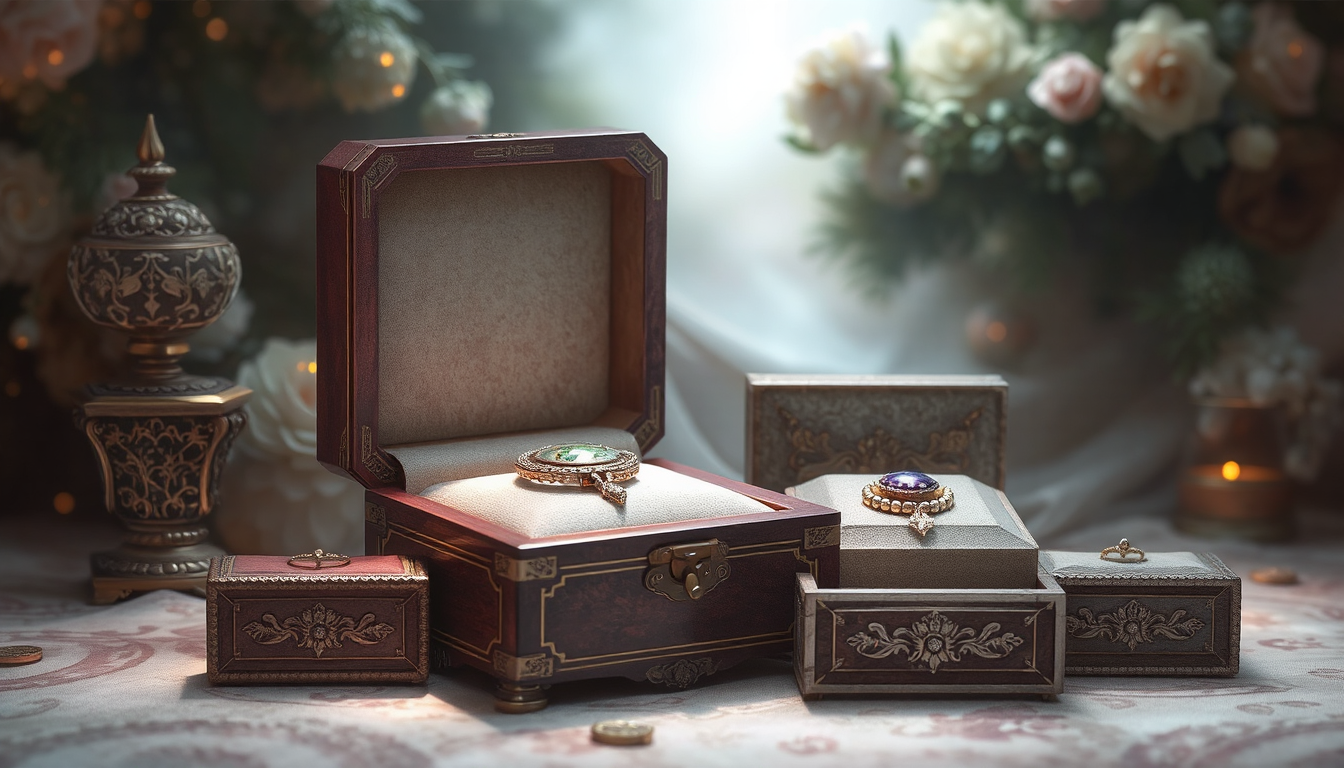
With our four pillars in mind, let’s explore the many jewelry box designs available. Understanding different materials and styles will help you narrow down your choices to find the perfect match.
Designs by Material
The material your jewelry box is made of decides how long it will last, how well it will protect and how it will look.
Classic Wood (Walnut, Cherry, Burl)
-
Characteristics: Wood is valued for its timeless beauty and strength. Rich wood grains like walnut and cherry offer a warm, classic look, while burl woods show unique swirling patterns.
-
Strengths: Best for structural protection and lasting quality. Often features fine craftsmanship and can become a family treasure.
-
Best For: Anyone who appreciates classic design, has a lot of jewelry and prefers that their jewelry box function as a stationary piece of furniture.
Luxurious Leather & Vegan Leather
-
Characteristics: Leather gives a sleek, sophisticated, modern look. It comes in many colors and works well for travel cases and high-end systems with multiple parts.
-
Strengths: Creates a refined exterior with a soft touch. Vegan leather offers a similar look with better sustainability. Works well for compact and portable designs.
-
Best For: Modern homes, people who travel often, and collectors who like a clean, polished appearance.
Clear Acrylic & Glass
-
Characteristics: Perfect for modern minimalists. These transparent materials let your jewelry shine through.
-
Strengths: Maximizes visibility—you can see everything at once. Clean, simple look fits well with modern decor.
-
Best For: Showing off fashion jewelry, organizing by color, and for people who need to see items to remember they have them.
Fabric & Velvet
-
Characteristics: These soft boxes or travel rolls focus on gentle protection. They’re often built around a soft core and covered in plush fabrics.
-
Strengths: Very gentle on delicate pieces like pearls or soft gemstones. Light and great for travel or drawer inserts.
-
Best For:Travel, holding onto heirloom pearls or as inserts in a larger, harder box.
Designs by Style
Between the materials, the overall design style says a lot about its operation and its owner’s personality.
Minimalist & Modern
-
Characteristics: Clean lines, geometric shapes, and neutral colors define this style. Function comes first, with smart features like stackable trays or hidden compartments.
-
Best For: Modern homes and those who believe organization shouldn’t just be simple, it should be elegant.
Vintage & Antique
-
Characteristics: These boxes are often decorative masterpieces, with detailed carvings, embossed patterns, mother-of-pearl inlays, or hand-painted designs.
-
Best For: Antique jewelry collectors, those with romantic or eclectic interiors, and lovers of the stories behind objects.
Armoires & Standing Boxes
-
Characteristics: A true piece of furniture, a jewelry armoire is for serious collectors. It stands tall with side doors that open to show rows of necklace hooks, multiple drawers, and a top compartment with a lid.
-
Best For: A big collection that would require many smaller boxes. Great for a empty corner in a bedroom or walk-in closet.
Travel Cases & Rolls
-
Characteristics: Compact, secure, and organized for travel. These designs have zippered closures, straps that snap down, and padded sections to keep items from moving and tangling while traveling.
-
Best For:Those who travel and do not want to leave their favorite pieces behind (whether they’re going away for the weekend or overseas).
How to Match a Jewelry Box Design to Your Personal Collection
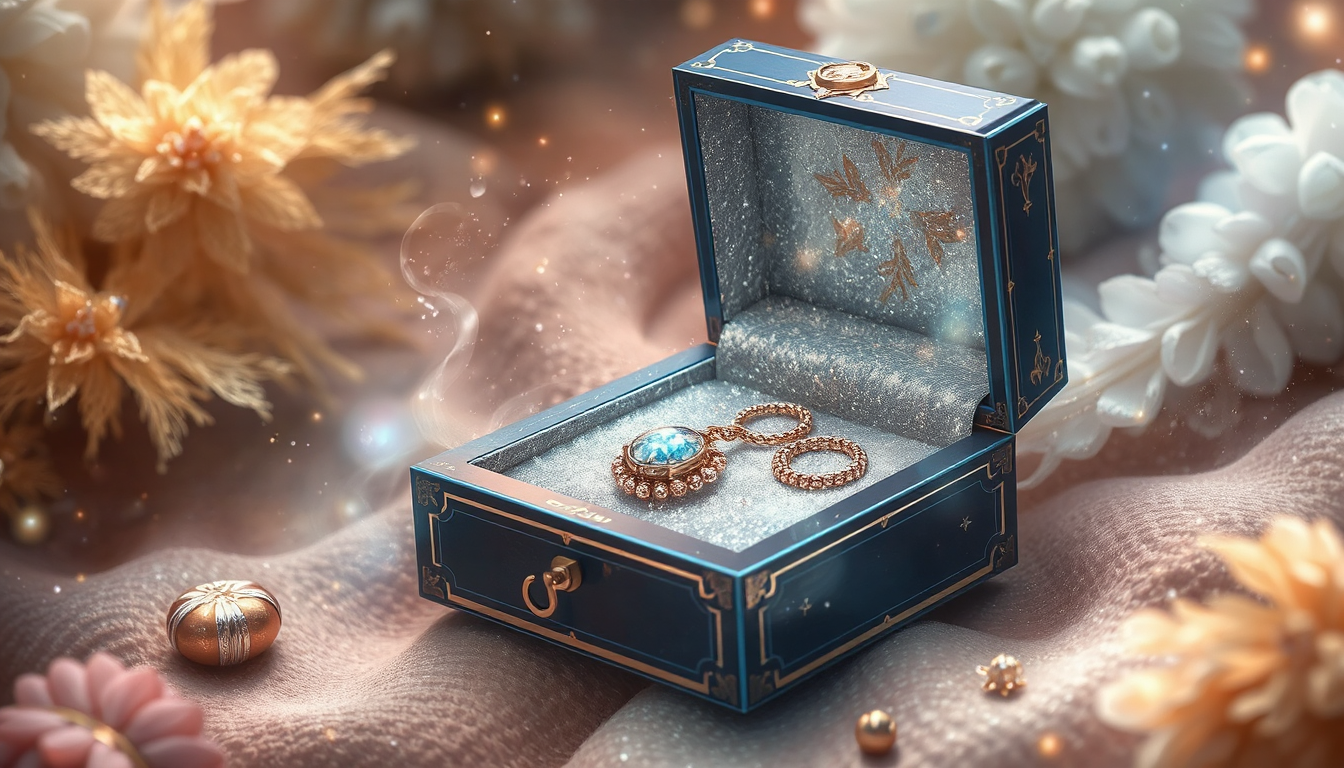
One thing is to know the general ideas. Using them is another. The optimal jewelry box design for you will depend on what you have. Now, let’s consider how to find a solution that meets your unique organizing challenges.
Tangled chains are the bane of many people’s existence. The ideal remedy is, of course, a jewelry box which includes its own dedicated necklace section with several well spaced hooks. This simple little thing can save you hours of frustration and so many ruined delicate links. This is the level of targeted matching we are suggesting people employ.
Now if you want to nail a specific collection choice, you can simplify your decision by referring to the following table that correlates collection types with potential features.
| If Your Collection is Rich In… | Look For These Design Features… | Avoid These Designs… |
| Delicate Necklaces & Chains | Vertical necklace cabinets, individual hooks, tall armoires. | Shallow, open-compartment trays where chains can tangle. |
| Rings & Stud Earrings | Multiple soft ring rolls, gridded trays with small compartments, earring ladders. | Deep, undivided drawers where small items get lost. |
| Statement Bracelets & Watches | Deep, open drawers; valet trays; cushioned pillows for watches. | Boxes with many small, restrictive compartments. |
| Precious Metals & Gemstones | Anti-tarnish lining, solid construction, soft velvet or suede interiors, optional lock. | Unlined boxes or clear acrylic designs that offer no tarnish protection. |
For the Necklace Lover: Preventing Tangles
If delicate chains make up most of your collection, focus on vertical storage. Look for cabinet-style boxes with side doors that open to show hooks. This lets each necklace hang freely, preventing knots.
For the Ring & Earring Aficionado: Small Pieces, Big Organization
For collections with many small items, careful compartments are key. A design with plenty of ring rolls and trays divided into small squares is essential. This keeps earring pairs together and gives every ring its own spot.
For the Statement & Chunky Jewelry Collector: Space & Sizing
If you love bold cuffs, large hoops, and big necklaces, you need space. Avoid boxes with many tiny compartments. Instead, look for designs with deep, open drawers and trays where larger pieces can fit without being squeezed.
For the Small but Precious Collection: Quality over Quantity
If you have a few very valuable pieces—like an heirloom watch, a diamond pendant, or wedding rings—focus on maximum protection. A smaller, high-quality box made from fine wood with a soft, anti-tarnish interior and a secure lock is a much better choice than a large, poorly made one.
Beyond Tradition: The Future of Jewelry Box Designs
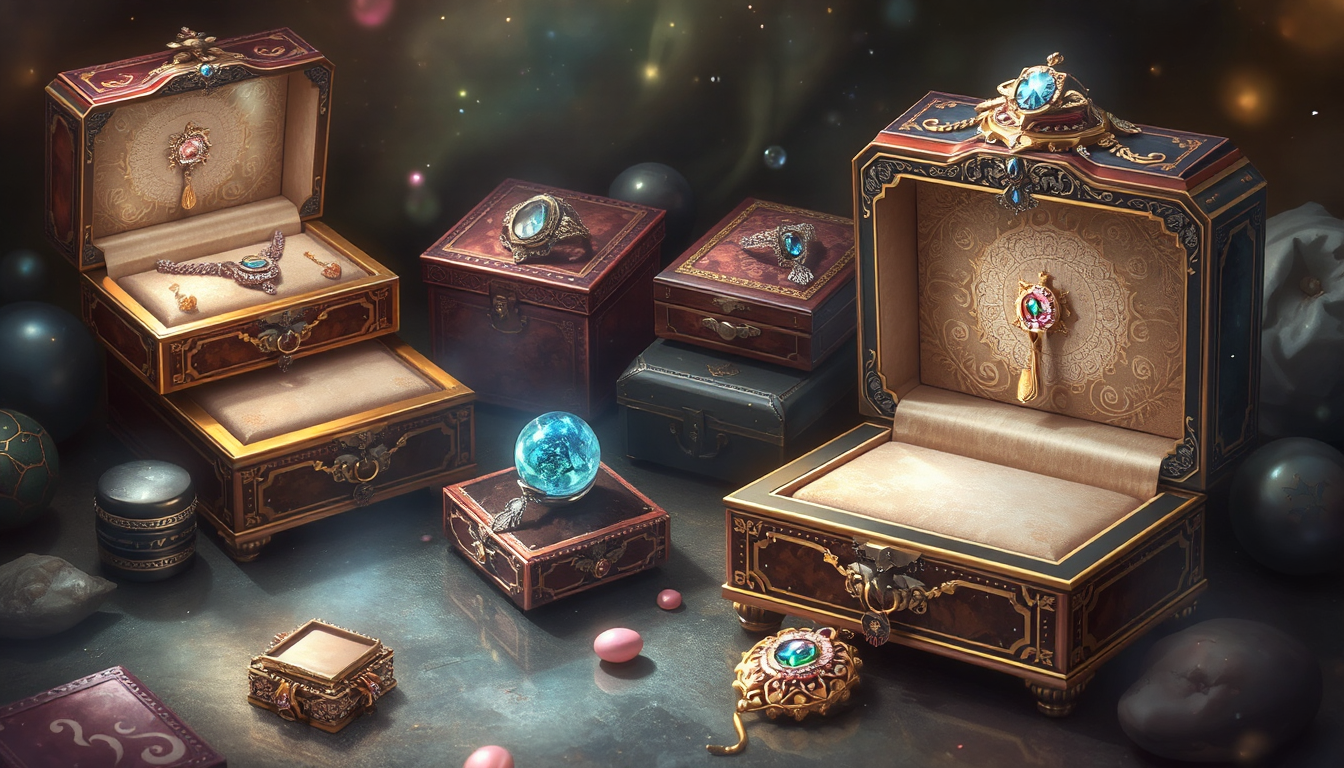
The luxury world is changing, and jewelry box designs are changing too. Two important trends are shaping how we’ll store our treasures: a strong commitment to sustainability and a growing desire for custom personalization.
The Rise of Sustainable Designs
Between that rising awareness, the demand for ethical production grows. Market trends demonstrate a clear movement towards sustainable luxury and the luxury jewellery box makers are doing new things to reflect those trends.
We’re being offered more eco-friendly materials, too, including fast-growing bamboo, reclaimed wood, recycled fabrics and even recycled acrylics. That philosophy carries over to packaging: Brands like Boucheron have adapted and lightened boxes, using fewer — and more sustainable — materials.
“The best design is that which thinks not only of the life of the object but the effect of the object. An environmentally friendly jewelry box is one that protects your treasures and the planet.”
The Art of Custom & Bespoke Boxes
For those who demand the best, the way forward is tailor-made. Custom jewelry box designs that go beyond personal luxury can happen when you work with someone who is a skilled craftsperson who listens to your needs.
It is listing all you have in your collection and designing a box where every hook, inside a pipe, every drawer is for a specific piece. It goes back to the origins of jewelry boxes — a singular item, as special and valued as the collection it contains. It also is a great marriage of good looks and function.
FAQ
-
What materials offer the best protection for fine jewelry?
Wood and leather jewelry cases lined with anti-tarnish velvet or microsuede keep the shine on precious metals and gemstones and protects from scratches and tarnish. -
How do I choose a jewelry box design for a collection with many necklaces?
Seek out jewelry box models that provide cabinet style doors with vertical storage and individual hooks to keep necklaces from tangling or knotting. -
What are the latest trends in sustainable jewelry box designs for 2025?
Eco-friendly materials such as bamboo, recycled wood, organic fabric and biodegradable substitutes are at the forefront of sustainable jewelry box design in 2025. -
How important is the internal organization of a jewelry box?
Internal organization is key as it helpst to avoid damage, allows pairs to stay together and ensures that your collection is easy to navigate—so keep an eye out for styles that have dedicated spots for rings, necklaces and earrings, as well as bracelets. -
What should I consider when buying a jewelry box for travel?
Travel jewelry boxes need not to have extra bulk, they just need to have tight locks, cushioned spaces, anti-tangle features and maybe even RFID protection or locking mechanisms if you want to be extra safe.




